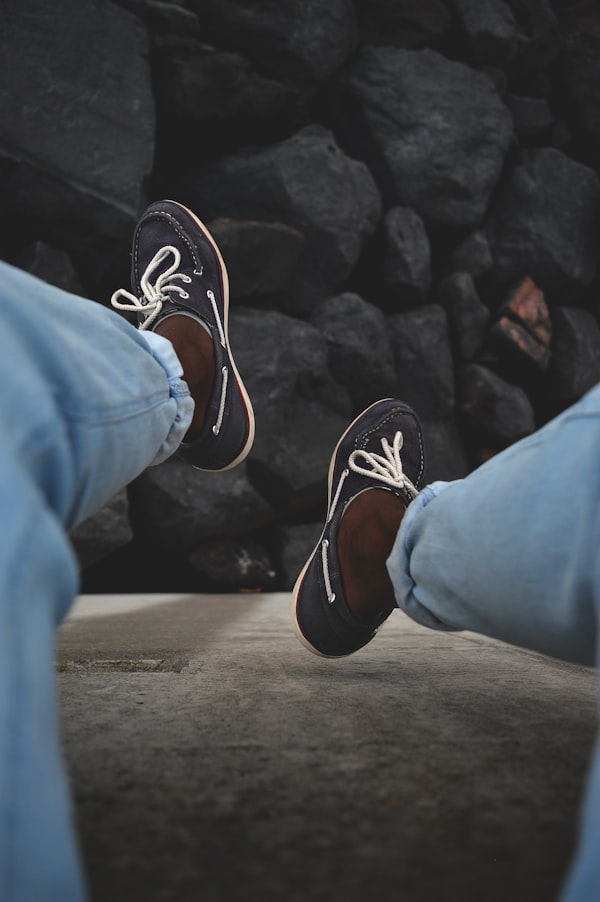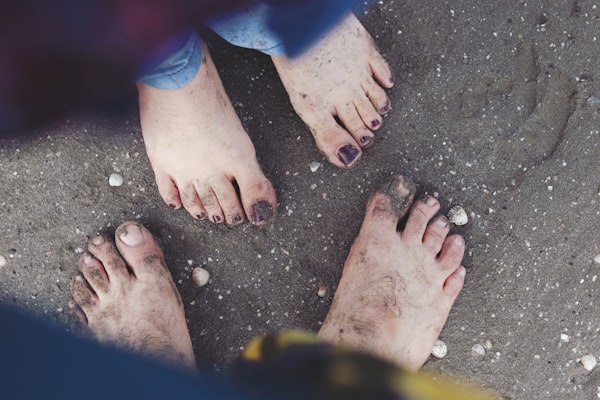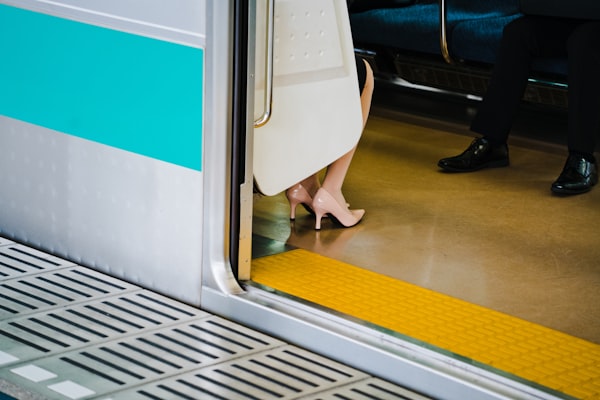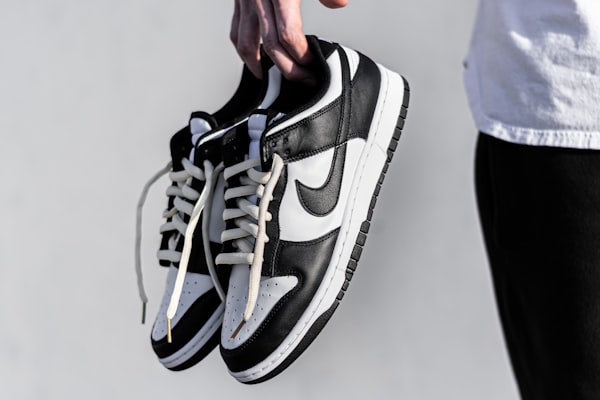Are you a runner suffering from Achilles Tendonitis, feeling like you're constantly playing a game of hopscotch instead of a peaceful jog?
Well, the problem could be as simple as your running shoes! Unfortunately, wearing the wrong shoes can cause your Achilles tendon to scream at you like a toddler throwing a tantrum.
But don't worry, because today we'll give you the scoop on how to fit running shoes that will make your Achilles tendon sing like a choir of angels.
So, sit back, relax, and get ready to learn how to find the perfect pair of running shoes to make your next jog a pain-free success.
What Is Achilles Tendonitis?
Achilles Tendonitis is a condition that arises from the overuse of the fibrous, thick Achilles tendon, which joins the calf muscles at the back of the lower leg to the heel bone. This tendon is vital for activities such as walking, running, and jumping, as it facilitates the lifting of the heel off the ground.
Excessive strain, overuse, or sudden increase in physical activity can lead to inflammation, irritation, or swelling of the Achilles tendon, causing Achilles Tendonitis. This condition can result in discomfort, stiffness, and pain along the tendon, especially in the morning or after prolonged rest periods.

Risk factors often contributing to Achilles Tendonitis include tight calf muscles, unsuitable footwear, an abrupt increase in physical activity, and training on uneven or hilly ground. The standard treatment procedure for Achilles Tendonitis entails RICE therapy, physical therapy, stretching, and strength-building exercises. However, in severe cases, medical intervention or surgery might be necessary.
Why Is the Fit of Running Shoes so Important for Achilles Tendonitis Sufferers?
The fit of running shoes is crucial for Achilles Tendonitis sufferers because ill-fitting shoes can exacerbate the condition and cause additional pain and discomfort. Shoes that are too tight can put pressure on the tendon and aggravate inflammation. At the same time, shoes that are too loose can cause the foot to slide around, leading to rubbing and friction on the tendon.

Properly fitting shoes can help reduce the strain on the Achilles tendon and provide the necessary support and cushioning for running or other physical activities. Therefore, selecting the right fit of running shoes is essential for Achilles Tendonitis sufferers to prevent further injury and aid in the healing process.
What Are the Criteria for A Good-Fitting Running Shoe?
Choosing the right running shoe can make all the difference for individuals suffering from Achilles Tendonitis. With the proper fit, cushioning, and support, running shoes can minimize stress on the tendon, reduce discomfort, and aid in the healing process. Here are some criteria to remember when selecting a running shoe for Achilles Tendonitis sufferers.
1. Heel-To-Toe Drop
The heel-to-toe drop is the difference in height between the heel and forefoot of the shoe. A higher heel-to-toe drop can reduce the strain on the Achilles tendon by placing less tension on the tendon during the running gait cycle. However, a lower drop can benefit individuals who land on the midfoot or forefoot when running, promoting a more natural and efficient running gait. It's important to note that a higher heel-to-toe drop does not necessarily mean a shoe has more cushioning or support.
Different shoes may have different heel-to-toe drops, so it's essential to try on various shoes and find the one that feels most comfortable and supportive. Ultimately, finding the right heel-to-toe drop for your running style and Achilles Tendonitis symptoms can help prevent further injury and make running more enjoyable.
2. Cushioning
Cushioning is an essential aspect when selecting running shoes for Achilles Tendonitis. It helps to absorb shock and reduce the impact on the tendon, providing a more comfortable and less stressful running experience. However, the amount of cushioning required can vary depending on the severity of the Achilles Tendonitis and personal preference. Some individuals may need more cushioning to alleviate pain and reduce stress. In contrast, others may find that too much cushioning causes instability and discomfort.
Finding the right balance of cushioning is crucial to provide adequate support and comfort without compromising stability. Additionally, different shoes may offer varying degrees of cushioning, so it's essential to try on several shoes and choose the one that feels most comfortable and supportive for your needs.
3. Toe Box Width
The toe box width is an essential aspect to consider when selecting running shoes for Achilles Tendonitis. Shoes with a wider toe box can reduce pressure on the ball of the foot and prevent toes from rubbing against the sides of the shoe, which can aggravate Achilles Tendonitis. Additionally, wider toe boxes can provide more space for the toes to move naturally, promoting proper foot alignment and reducing the risk of injury. However, it's crucial to find a balance between width and snugness, as shoes that are too loose can cause instability and discomfort.
When trying on shoes, ensure that the toe box provides enough room for your toes to move freely without sliding around inside the shoe. Ultimately, finding a shoe with the appropriate toe box width can help reduce stress on the Achilles tendon and provide a more comfortable running experience.
4. Arch Support
Arch support is an important consideration when selecting running shoes for Achilles Tendonitis. Individuals with high arches may require more support to reduce stress on the Achilles tendon and promote proper foot alignment. Shoes with a deep heel cup and adequate arch support can provide better stability and support for those with high arches, cradling the heel and maintaining proper alignment throughout the foot. However, it's essential to find the right level of support, as shoes with too much arch support can be uncomfortable and even cause additional stress on the tendon.
When trying on shoes, pay attention to how the arch support feels and ensure it provides adequate support without causing discomfort. Ultimately, finding the right level of arch support can help reduce stress on the Achilles tendon and provide a more comfortable running experience.
5. Flexibility
Flexibility is a crucial factor when selecting running shoes for Achilles Tendonitis. Shoes that are too stiff can place additional stress on the Achilles tendon, making it difficult to move naturally and causing discomfort during running. On the other hand, shoes that are too flexible can lack stability and support, increasing the risk of injury. Therefore, balancing flexibility and support is essential for a comfortable and stable running experience.
When trying on shoes, pay attention to how they bend and flex and ensure they allow natural foot movement without feeling too flimsy or unstable. Additionally, different shoes may offer varying degrees of flexibility, so it's essential to try on several pairs and choose the one that feels most comfortable and supportive for your needs. Ultimately, finding a shoe with the appropriate level of flexibility can help reduce stress on the Achilles tendon and promote proper foot movement during running.
6. Weight
The weight of running shoes is an essential factor to consider when selecting shoes for Achilles Tendonitis. Shoes that are too heavy can place additional strain on the Achilles tendon, making it more challenging to run comfortably and potentially causing further injury. Lightweight shoes, on the other hand, can help minimize strain on the tendon and provide a more comfortable and efficient running experience. However, it's essential to find a balance between weight and support, as shoes that are too lightweight may lack the stability and support necessary to reduce stress on the tendon.
When trying on shoes, pay attention to how they feel on your feet and ensure that they provide the appropriate level of support while still being lightweight enough to minimize strain. Ultimately, finding a shoe with the proper weight can help reduce stress on the Achilles tendon and make running a more comfortable and enjoyable experience.
7. Traction
Traction is an essential factor to consider when selecting running shoes for Achilles Tendonitis. Good traction can help prevent slips and falls, reducing the risk of additional strain on the Achilles tendon. Running shoes with adequate traction can also provide a better grip on various surfaces, ensuring stability and reducing the risk of injury. However, finding a balance between traction and weight is essential, as shoes with too much traction may be heavier and cause additional strain on the tendon.
Pay attention to the sole when trying on shoes and ensure that it provides enough traction to feel stable on different surfaces without feeling too heavy or cumbersome. Ultimately, finding a shoe with the appropriate traction can help reduce the risk of slips and falls and make running a more comfortable and safe experience for those with Achilles Tendonitis.
8. Breathability
Breathability is a key factor to consider when selecting running shoes for Achilles Tendonitis. Shoes with breathable uppers can help keep your feet cool and dry, reducing the risk of blisters and odor. Breathable materials like mesh allow air to circulate through the shoe, helping to regulate temperature and moisture. This can be especially important for individuals who sweat heavily or live in hot or humid environments. Additionally, shoes with breathable uppers can help prevent bacteria and fungus growth, which can cause foot odor and infections.
When trying on shoes, pay attention to the materials used in the upper and ensure they provide adequate breathability without compromising support or durability. Ultimately, finding a shoe with a breathable upper can help promote foot health and make running a more comfortable and enjoyable experience for those with Achilles Tendonitis.
9. Durability
Durability is an important consideration when selecting running shoes for Achilles Tendonitis. Running can put a lot of wear and tear on shoes, especially for those with Achilles Tendonitis who may require more supportive shoes. Choosing shoes made with durable materials can help ensure they can withstand the wear and tear of running without breaking down too quickly.
Pay attention to the materials used in the sole, upper, and other components when trying on shoes. Ensure they are high quality and can withstand the rigors of running. Additionally, finding shoes with good durability can help save money in the long run, as they won't need to be replaced as frequently. Ultimately, choosing shoes with good durability can help ensure they provide the necessary support and protection for the Achilles tendon while still holding up over time.
Selecting the right running shoe is critical for individuals with Achilles Tendonitis. It's essential to look for shoes with the appropriate heel-to-toe drop, cushioning, toe box width, fit, arch support, flexibility, and weight to reduce stress on the tendon and alleviate discomfort. Considering these criteria, you can find the ideal running shoe to aid in the healing process and prevent further injury.
Why Should I Have My Feet Measured?
While selecting the right shoe fit, foot size is a critical consideration. However, it's important to remember that foot size can fluctuate over time due to age, weight gain, pregnancy, and specific medical conditions. Therefore, measuring your feet frequently is essential, especially if you experience discomfort or pain while wearing shoes. In addition, it helps obtain the appropriate shoe size and prevent issues such as calluses, blisters, or pinching.
Furthermore, since one foot may be slightly bigger than the other, it's essential to fit the shoe to the larger foot for a comfortable and proper fit. When measuring the feet, it's vital to measure while standing as it provides the most accurate measurement and ensures that the shoes fit well and comfortably.
What Features Should Achilles Tendonitis Sufferers Look for In a Running Shoe?
Selecting the appropriate running shoes can be a game-changer for running with Achilles Tendonitis. Shoes with specialized features can help alleviate tension on the tendon, reduce discomfort, and assist in recovery.
Shoes that are just right have several key features, which you can check out in our full article about choosing running shoes for Achilles Tendonitis sufferers.

Tips from Our Editors
- While trying on shoes, ensure you wear the same type of socks you plan to use during your runs. Then, walk around the store to ensure the shoes offer a comfortable and supportive fit.
- Choose moisture-wicking, breathable socks made from synthetic blends (polyester, acrylic, or nylon) or merino wool to keep your feet dry and reduce the risk of blisters and odor. Avoid cotton socks, as they retain moisture and can cause discomfort when wet.
- Running shoes with a deep heel cup can provide better support and stability for people with high arches by cradling the heel, maintaining proper alignment, and reducing stress on the Achilles tendon.
- Shoes with a raised arch and a reinforced heel can offer better weight distribution and foot stability for people with flat feet. In addition, these features can help counteract overpronation, which can put extra strain on the Achilles tendon.
- Purchase shoes during the afternoon or evening when your feet are at their maximum size to ensure the best fit.
On a Final Note
Congratulations, my fellow Achilles Tendonitis sufferers! You have now graduated from the school of hard knocks and have become a master in the art of finding the perfect running shoes.
You can run like the wind with your newfound knowledge without pain or discomfort.
So go forth, my friends, and let nothing stand in the way of your running goals – except maybe a really good sale on running shoes.
Related Articles










